Sensors
Sensors are a key component in industrial automation and play an important role improving productivity by inspecting, detecting and gathering information on processes and manufacturing operations that would otherwise have to be done manually. In industrial facilities, sensors can be used to measure, detect changes, and regulate processes and conditions like temperature, fluid levels, flow, displacement, position, dimensions and appearance. Vision, temperature, measurement sensors eliminate the need to manual
inspect and monitor processes which improves productivity and accuracy. There are a wide range of sensors designed for a multitude of applications and for industrial environments where extreme temperatures, electromagnetic interference, noise and vibration exists. They also contribute to predicting and preventing future events.
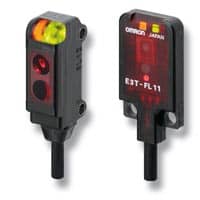
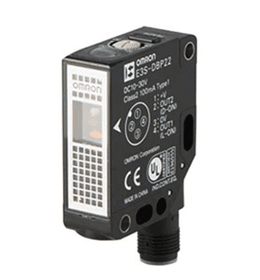
Photoelectric Sensors
Photoelectric Sensors are used operate on the general principle of light being reflected from (or blocked by) a target, which then triggers a response from a photo-sensitive receiver – turning on or off an output based on the presence or absence of an object. They come in many flavors, including diffuse-reflective, through-beam, retro-reflective, and background suppression. One large subset of photoelectric sensors is fiber optic sensors, which allows for use in tight spaces or harsh environments. Omron’s Photoelectric Sensors detect photo-optical workpieces and they provide a variety of sensors, including diffuse-reflective, through-beam, retro-reflective, and distance-settable Sensors, as well as Sensors with either built-in or separate amplifiers.
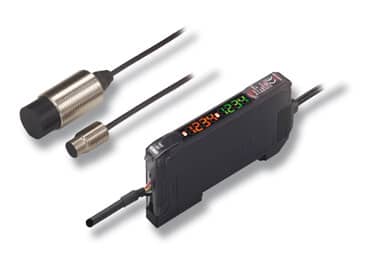
Proximity Sensors
Proximity Sensors operate on the principle of a target interfering with a generated electro-magnetic field when close to the sensor – most commonly a metal target and an inductive proximity sensor, but options also exist for capacitive proximity sensors, which can detect the presence of other non-magnetic materials such as water . These have a short range (up to about 20mm), and are cost-effective in quantity. Omron offers proximity sensors that use high-frequency oscillation to detect ferrous and non-ferrous metal objects and available in environment resistance, heat resistance, resistance to chemicals, and resistance to water.
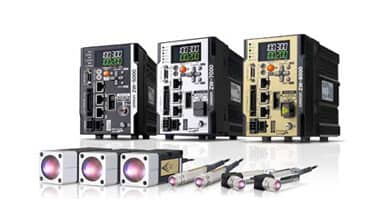
Measurement Sensors
Another broad category, these are sensors that measure something – for example, a laser sensor that measures distance to an object very precisely and relays that information via analog outputs or communications to a PLC. There are 2D measurement sensors for profiling a workpiece, contact sensors for detecting object size, and many, many other options. These can range from low-hundreds to many thousands of dollars. Omron’s displacement and measurement sensors are used to measure distances and heights. A wide variety of models is available, including Laser Sensors, LED Sensors, Ultrasonic Sensors, Contact Sensors, Eddy Current Sensors, and more.
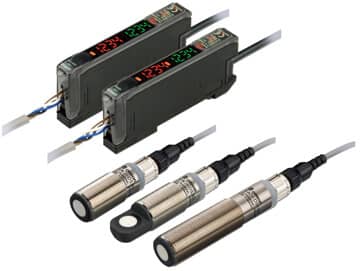
Ultrasonic Sensors
Ultrasonic Sensors operate by emitting a low-frequency vibration, and measuring timed response echo as that vibration bounces off a target. These work well in applications like tank level monitoring, where you have a large, flat surface (liquid in the tank) to reflect the sound waves from. Measurement ranges go from a few inches to about 50 feet. Ultrasonic waves are used to enable stable detection of transparent objects, such as transparent films, glass bottles, plastic bottles, and plate glass, using Through-beam or Reflective Sensors. Omron offer two types of ultrasonic sensors: digital amplifier ultrasonic sensors and compact ultrasonic sensors.
Resources
Omron Proximity Sensors Brochure
Download the brochure
Omron E3S Photoelectric Sensor Brochure
Download the brochure
Intelligent Force Sensor Brochure
Download the brochure
Let us help find what you need.
Call 866.397.7388
Give us a call and get help right away. We're here for you!
Get in touch
Got a question or need more info? Contact us!
Request a Quote
Get pricing quickly. Fill out our Request For Quote form.
